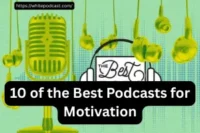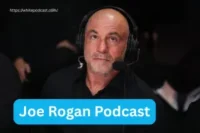What’s the Difference Between Broadcast and Podcast?
Published: 11 Apr 2025
In today’s media landscape, two popular forms of content delivery are broadcasting and podcasting. While both serve to communicate information and entertainment to the audience, they do so in different ways. Understanding these differences can help you decide which medium is right for your content needs. Let’s dive into the key distinctions between a broadcast and a podcast.
Broadcasting and podcasting are two popular ways to share content, but they differ in accessibility, audience interaction, and format. In this post, we’ll break down the key differences between these two mediums to help you decide which one suits your needs best.

What is a Broadcast?
Definition: A broadcast refers to the transmission of audio or visual content to a wide audience via radio, television, or online streaming. It is generally transmitted over the airwaves or through cable, often in real-time, and reaches a broad audience at once. What is a podcast complete guide step by step & tips
Key Characteristics:
- Live or Scheduled: Broadcasts are usually live or scheduled events. For example, news programs are broadcast live, while TV shows or radio segments are aired at specific times.
- One-Way Communication: Broadcasts are one-way communication methods. The audience listens or watches, but there is no immediate interaction between the broadcaster and the viewers or listeners during the broadcast.
- Limited Access: In the case of traditional broadcasting (like radio or TV), audiences must be in a specific location and tune in at a designated time to access the content. However, with digital broadcasts, this can be more flexible.
Examples:
- TV Programs: News shows, reality TV, and sports events are often broadcast live.
- Radio Shows: Talk shows, music programs, and interviews aired on radio stations.
- Live Sports: Major sporting events like the Super Bowl or World Cup are broadcast to millions in real-time.
What is a Podcast?
A podcast is a series of digital audio or video files that users can download or stream from the internet. Podcasts are typically released in episodes and are available on-demand, allowing listeners to choose what they want to listen to and when they want to listen.
Key Characteristics:
- On-Demand: One of the main features of podcasts is that they can be listened to at any time. You don’t have to tune in at a specific time or be in a particular location. Once a podcast is published, it’s available for anyone to access whenever they choose.
- Two-Way Communication: While podcasts are generally one-way communication (the host speaks, and the listener listens), there is often a greater opportunity for engagement. Podcasts frequently have social media communities, listener feedback, or even call-in segments, allowing the audience to interact with the content creators.
- Access Anytime: Podcasts can be accessed through various platforms like Spotify, Apple Podcasts, Google Podcasts, or dedicated podcast websites. They can be downloaded and stored on devices, so you can listen offline as well. How to Start a Podcast:
Examples:
- Interview-Based Podcasts: Shows where hosts interview guests on specific topics, such as business, entertainment, or health.
- Storytelling Podcasts: Fictional or nonfiction stories shared in episodes, like “Welcome to Night Vale” or “This American Life.
- Educational Podcasts: Podcasts focused on teaching or discussing specific subjects, from history to personal development, such as “How I Built This” or “The Daily.
Broadcast vs Podcast
Broadcast:
Live or scheduled content.
Must tune in at a specific time.
Limited audience interaction.
Controlled by TV or radio stations.
Often one-way communication.
Broadcast on TV, radio, or cable.
Limited to where you can access.
Content is for mass audiences.
Scheduled news, sports, or shows.
Can’t skip or replay live broadcasts.
Podcast:
Available on-demand.
Listen anytime, anywhere.
More audience interaction (feedback, comments).
Independent creators control content.
Often pre-recorded and edited.
Available on streaming platforms (Spotify, Apple Podcasts).
Can be downloaded for offline listening.
Niche or specific topics.
Released in episodes or series.
Can pause, skip, or replay anytime.
Advantages and Disadvantages
Broadcast:
Advantage:
Broadcasts can reach millions of people instantly, offering real-time updates like breaking news, live sports events, and scheduled TV shows. This wide reach is perfect for delivering content to a mass audience.
Disadvantage:
However, broadcasts require you to tune in at specific times, limiting your flexibility. You can’t skip parts of the content, and you often have no control over what airs.
Podcast:
Advantage:
Podcasts provide the freedom to listen at any time, anywhere, and you have full control over what you want to hear. With a wide range of niche topics, podcasts enable the creation of more personalized content tailored to individual preferences.
Disadvantage:
On the downside, podcasts typically have a smaller, more dedicated audience compared to broadcasts. Additionally, since they are not live, they don’t provide real-time updates or breaking news, unlike broadcasts.
How They Impact Our Media Consumption
Broadcast and podcasts both shape how we consume media. While broadcasts have set the foundation for real-time news and entertainment, podcasts offer the flexibility to consume content on your own time.
The Growth of Podcasts
Podcasts have experienced a surge in popularity, offering an ever-expanding range of topics. Unlike broadcasts, podcasts enable listeners to explore niche subjects and are available on demand, making them a convenient choice for busy lifestyles.
Which Is Right for You?
Choose broadcast if you enjoy live events, scheduled shows, or breaking news. Opt for podcasts if you prefer flexibility, niche content, and personalized listening that fits your schedule.
Broadcast and Podcast: Complementary Forces
Instead of competing, broadcast and podcast complement each other. While broadcasting excels in real-time events, podcasts provide on-demand, detailed content. Both will likely continue to grow alongside each other as technology advances.
Conclusion
Broadcast and Podcast are both valuable forms of media communication but serve different needs. While broadcasts offer real-time content to a wide audience, podcasts give listeners the freedom to consume content on-demand at their own convenience.
Both have their unique advantages, with broadcasts excelling in immediate reach and live updates, while podcasts provide greater flexibility and a more personalized listening experience.
Ultimately, the choice between broadcast and podcast depends on your preferences—whether you enjoy scheduled, real-time media or the freedom to listen whenever and wherever you like.
- Which of the following is true about broadcasts?
A) Broadcasts are available on-demand at any time.
B) Broadcasts are scheduled or live events.
C) Broadcasts are only available on the internet.
D) Broadcasts can be paused and replayed.
- What is a key feature of podcasts?
A) They are always live.
B) They are available only on radio.
C) They allow listeners to choose when to listen and what to listen to.
D) They require you to tune in at a specific time.
- Which of the following best describes a broadcast’s audience interaction?
A) Audiences can interact with the content in real-time.
B) Broadcasts allow listeners to submit questions during the live show.
C) Audience interaction is very limited during broadcasts.
D) Audience interaction is encouraged through online feedback.
- What is one major advantage of podcasts?
A) They are broadcasted to a large audience in real-time.
B) They are only available on TV.
C) They can be listened to on-demand anytime and anywhere.
D) They offer no flexibility in content.
- Which of the following would likely be found in a podcast but not in a traditional broadcast?
A) Live news updates.
B) A series of episodes with in-depth discussions on niche topics.
C) Sports commentary.
D) Scheduled entertainment shows.
Podcasts can be a great source of news and information, but they are usually not as immediate as broadcasts. While podcasts can provide in-depth analysis and discussions on current events, broadcasts (especially TV and radio) are better for real-time, breaking news.
No, you don’t need special equipment to listen to podcasts. All you need is a smartphone, computer, or tablet with internet access. You can listen to podcasts through platforms like Spotify, Apple Podcasts, or Google Podcasts. For offline listening, you can download episodes in advance.

- Be Respectful
- Stay Relevant
- Stay Positive
- True Feedback
- Encourage Discussion
- Avoid Spamming
- No Fake News
- Don't Copy-Paste
- No Personal Attacks

- Be Respectful
- Stay Relevant
- Stay Positive
- True Feedback
- Encourage Discussion
- Avoid Spamming
- No Fake News
- Don't Copy-Paste
- No Personal Attacks






